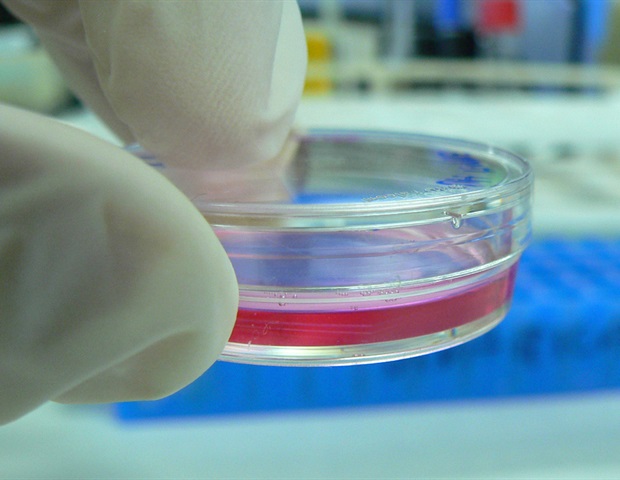
The environment friendly use of cellulose – the first plant scaffold and a serious pure constructing block – may handle many points related to petroleum-based polymers throughout numerous industries. Within the seek for extra sustainable makes use of of cellulose, Lithuanian scientists have developed a manufacturing methodology for a nanofibrous cellulose matrix, which has the potential to exchange non-renewable industrial even in biomedical purposes.
Textile, clothes, toys, and sports activities tools produced from artificial petroleum-based supplies have a major adverse affect on the setting by means of their total life cycle, from manufacturing to waste administration.
Scientists argue that it’s essential to exchange petroleum-based supplies with environmentally pleasant supplies and to display to customers that merchandise which have been in use for a few years may be changed whereas retaining their effectiveness. In response to Ingrida Pauliukaitytė, a PhD scholar at Kaunas College of Expertise (KTU) and one of many creators of the brand new environmentally pleasant cellulose nanofibre, the invention is a step in direction of a extra sustainable business.
A novel manufacturing methodology
Cellulose is the Earth’s most plentiful and widespread pure polysaccharide, generally present in plant cell partitions, algae or synthesised by sure micro organism. “I selected cellulose as a analysis object due to its pure origin and beneficial properties: its biocompatibility and degradability, number of chemical strains, and wide selection of purposes,” says the inventor.
The invention was developed utilizing the wet-type electrospinning methodology, whereby cellulose is dissolved in particular solvents – ionic liquids – and the answer is then transformed into fibers. “It is a methodology that permits the creation of cellulose matrices with a novel gel-like construction, much like cellulose fibres naturally synthesised by micro organism,” says the PhD scholar on the KTU College of Chemical Expertise (CTF).
This methodology of making cellulose has a bonus out there on account of its environmental friendliness. Particularly, the dissolution methodology used is extra environmentally pleasant on account of using “inexperienced solvents”.
Additionally, the uncooked materials for this manufacturing course of may be both uncooked cellulose or cellulose waste. Relying on the purity of the fabric, the ensuing fibre can be utilized for various merchandise. The recycled cellulose can be utilized to provide new polymer composite merchandise resembling toys, sports activities tools, home goods. If the uncooked materials is pure plant cellulose, biomedical purposes have nice potential, the place the sort of nanofibrous construction has distinctive biocompatibility properties.
A major increase for most cancers analysis
“Our invention – a nanofibrous cellulose matrix – is sort of a scaffold, a structural assist that helps cells to divide and develop,” explains Pauliukaitytė.
The biocompatibility talked about by KTU scientist Pauliukaitytė is essential in tissue engineering to keep away from the residing organism’s immune response to a fabric used for cell replica aside from the one naturally synthesised by the organism.
As well as, cellulose has very beneficial mechanical properties, in order that the fibres developed are robust and may stand up to the excessive stresses that come up when cells proliferate. Since cellulose absorbs water, using cellulose fibers in wound therapeutic can management the quantity of moisture that happens through the therapeutic course of.”
Ingrida Pauliukaitytė, PhD scholar at Kaunas College of Expertise
Up to now, the applicability of cellulose in tissue engineering has been examined for the reconstruction of cartilage, bone and vascular buildings. Nevertheless, given the biocompatibility, structural and moisture retention properties of cellulose, this polymer has nice potential to be used in regenerative medication, which goals to stimulate the physique’s pure restoration mechanisms and restore misplaced organic capabilities, and for organ progress.
As well as, the cellulose nanofibers developed should not solely biocompatible and environmentally pleasant, but in addition have the potential to kind three-dimensional (3D) cell fashions that higher mirror cell behaviour within the pure setting. “It is a vital benefit, particularly in tissue engineering and most cancers analysis, as 3D cultures enable for extra exact experiments and a greater understanding of cell progress and interactions,” says Pauliukaitytė.
Supply:
Journal reference:
Pauliukaitytė, I., et al. (2024). Regenerated nanofibrous cellulose electrospun from ionic liquid: Tuning properties towards tissue engineering. Journal of Biomedical Supplies Analysis Half A. doi.org/10.1002/jbm.a.37798.

